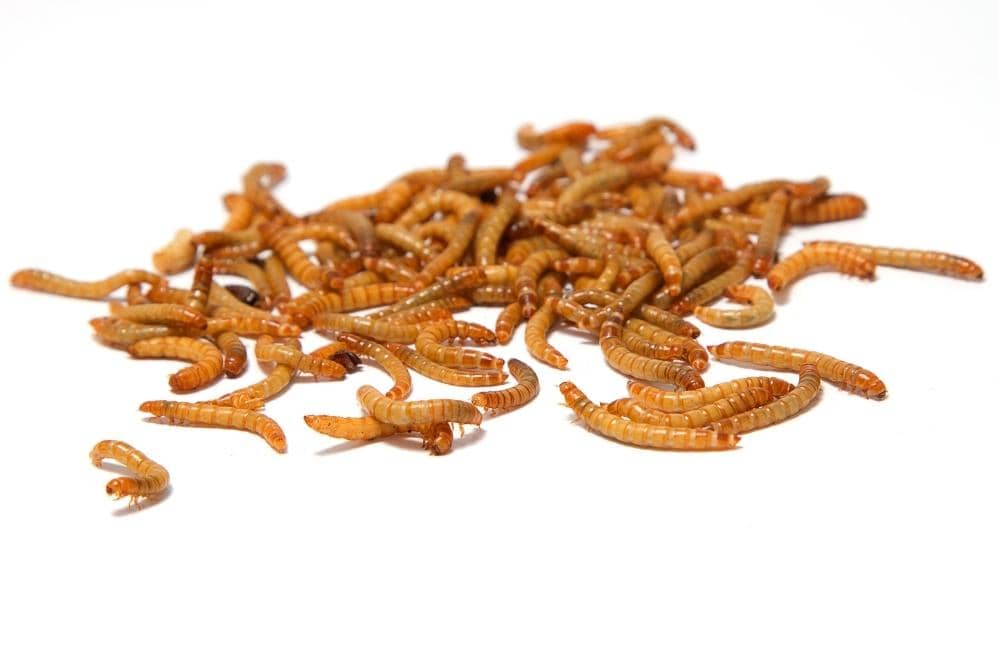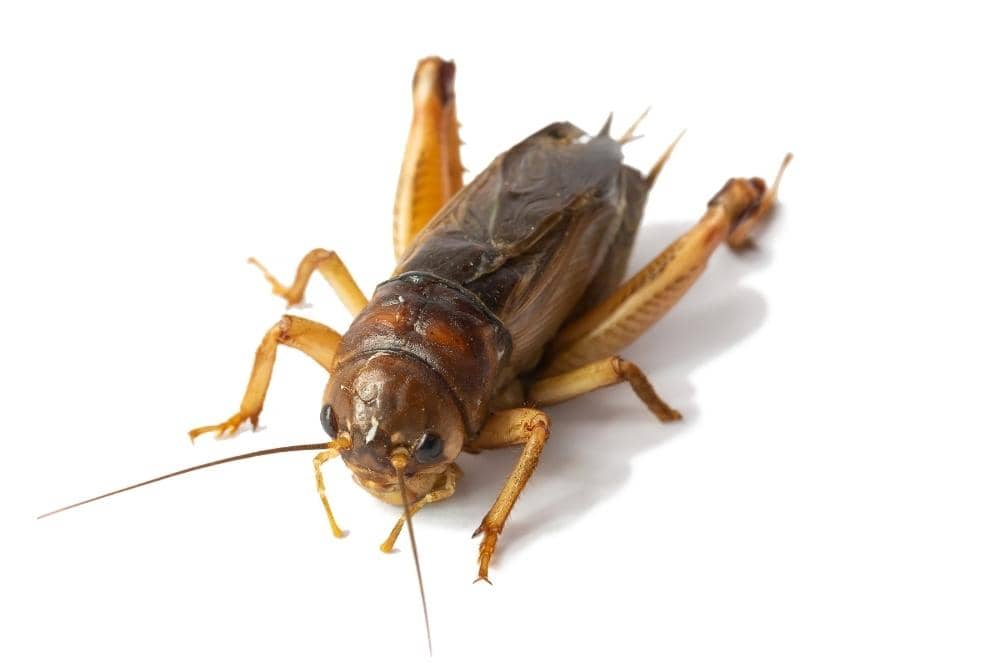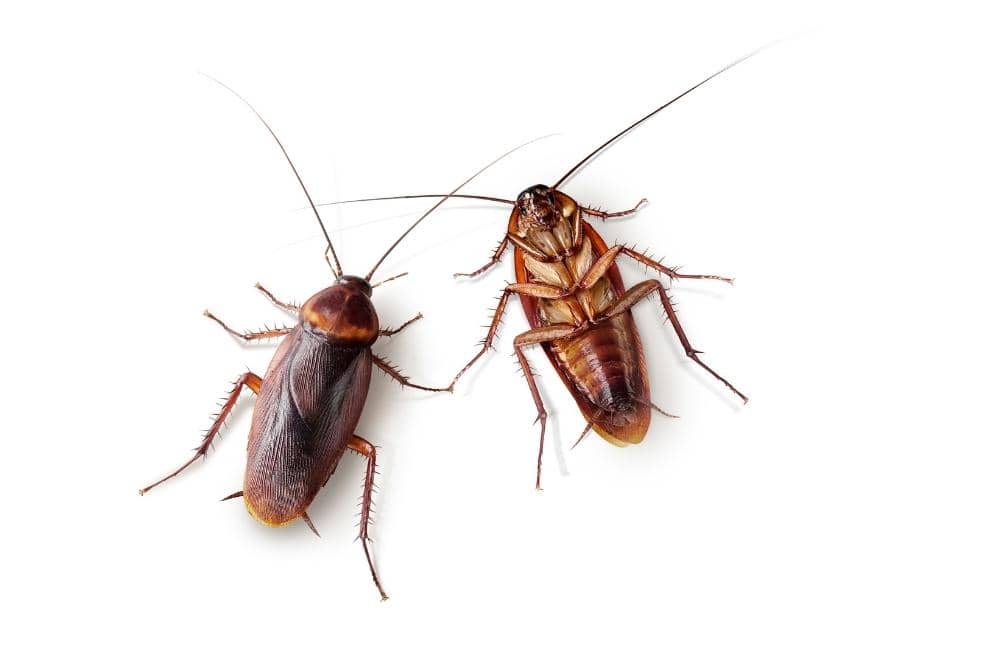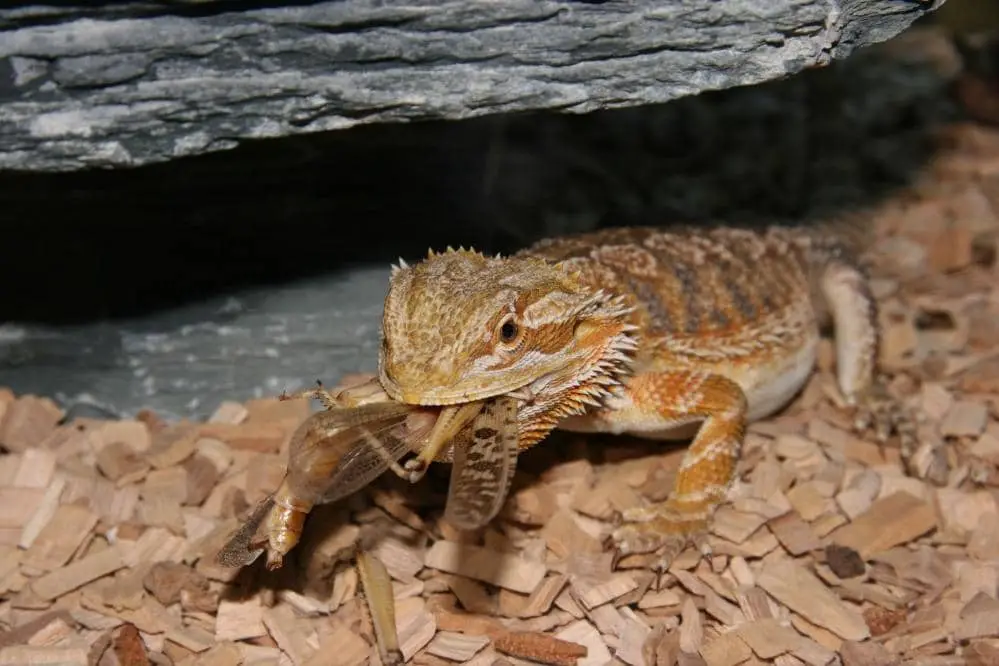The consumption of live prey is an essential component of a bearded dragon’s diet for maintaining its overall health and happiness. Even though it is commonly known that dragons enjoy eating live food, many people don’t realize that not all live meals are equally beneficial for their dragons.
Why Live Food Is Necessary For Bearded Dragons?
Though your bearded friend is omnivores and can survive on both plant and animal source diet, they need live food regularly to be healthy and happy. Live feed provides them the opportunity to satisfy their hunting instinct and necessary physical and mental stimulation. In addition, live food’s protein contents are much higher than vegetables and fruits. Baby beardies need more protein than adult beardies, so the insect to vegetable ratio varies from 80 : 20 (for baby beardies) to 20 : 80 (for adult beardies).
Commonly Fed Live Food Options (Pros & Cons)
1. Mealworms

Mealworms are one of the most often used live meals and are frequently suggested by pet stores. However, our experience has shown that dragons might have difficulty digesting mealworms if they are the only live food they receive. Because of this, we wouldn’t recommend using them as a dragon’s primary source of live food. In spite of this, they are an excellent addition to a varied diet, and when offered to the dragon once or twice a week, they may serve as an excellent reward for their good behavior.
2. Locust

Your dragon would do much better hunting for its food among the lively and colorful locusts. They are almost as nutritious as crickets, but finding them and buying them is more difficult, and they are more expensive. Because they will often be larger than the crickets that you regularly serve the dragon, you should ordinarily limit your feedings to no more than a half dozen at a time. They are quite simple to see because of their vivid yellow and black coloring and the fact that they jump around a lot, making them very easy to notice. In most cases, we only resort to using these if the dragon is having difficulties locating its crickets or has been without its meal for a short period of time. Since locusts are less numerous, they might be easier to keep and handle than other live foods; hence, if you find that they work out better for you, by all means, make them the primary live food source.
3. Brown cricket

The brown cricket is a primary source of nutrition for the diets of many insectivorous and omnivorous reptiles. They are not only incredibly low in cost and simple to locate but also have a high nutritional value and are simple to digest. This is the most common type of live food for reptiles and exotic pets and should be available at any store you go to that sells either type of animal. We went with brown crickets rather than black crickets since brown crickets have a reputation for being a little bit quieter and less aggressive than their black counterparts. If your dragon is having trouble capturing them or just isn’t interested in doing so, black crickets are a fantastic option to consider. They are able to burrow beneath food plates and water bowls, which is one potential drawback; therefore, it is important to check before adding more.
4. Cockroaches

Although they are harder to obtain, cockroaches provide an excellent complement to the diet of the dragon. They often contain a more substantial meal and a very high amount of protein. In spite of the fact that they are packed with nutrients, we have discovered that their size, ease of digestion, and nutritional value are not quite on par with those of crickets. For this reason, we include them in a more diverse diet rather than making them our primary source of food. We wouldn’t generally give them more than once or twice a week because even a small number of cockroaches make for a satisfying meal.
5. Wax worms
Wax worms are a type of larvae that are very little, light, and silky, and we feed them to our dragons as a treat very frequently. They aren’t very big and extremely easy to digest, so we will also use them if we have dragons looking a bit underweight or having trouble eating their typical food. This is because they aren’t very huge. Due to the extremely high fat content, they are best utilized as a snack for recovery rather than as a primary component of one’s diet. We would give them a treat once every week or two in the regular course of events. You may use tweezers to feed them to your dragon, or you can just put a bowl of worms in front of it and let it go to town. It is sufficient for an adult dragon to eat between 6 and 10 every meal.
6. Butter worms
Butter worms are a type of microscopic worms that are high in calcium and protein relative to their size. However, they often have a lower moisture content than the majority of the other insects that are described in this article. Because of the high calcium content of butter worms, a bearded dragon’s diet can benefit significantly from the addition of these insects. They are also beneficial since they provide some diversity to the diet.
Because of their small size, you would have to provide an adult bearded dragon with a substantial quantity of them in order to satisfy its nutritional needs. The various kinds of insects that are described before make for a better staple.
7. Hornworms
Bearded dragons benefit greatly from eating hornworms, also known as Goliath worms. They have a significantly greater proportion of water to protein than Dubia Roaches, although their water content is substantially higher. Bearded dragons need a significant quantity of calcium to prevent metabolic bone disease, and Goliath worms are an excellent source of this mineral. However, they are capable of reaching quite huge sizes. This is not an issue with fully grown dragons, but it is something that should be kept in mind while dealing with juvenile and infant dragons.
Also, keep in mind that although horned worms are fantastic for hydration, if you overfeed too many of them, there is a danger of loose stools or diarrhea, both of which are undesirable because they may be messy and aren’t ideal. Because of this, we only eat horned worms sometimes as a form of live food.

